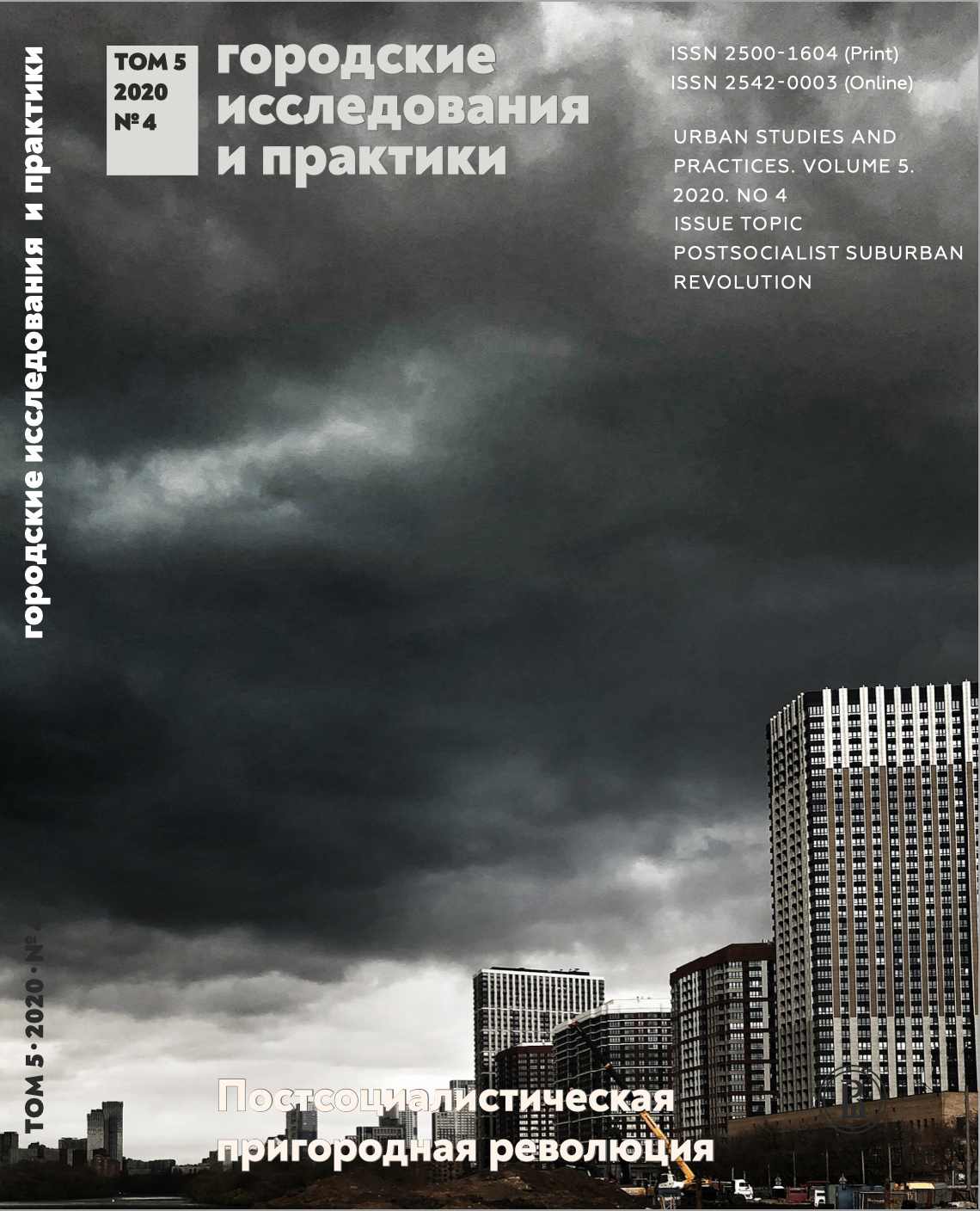Changing the Value of the Dacha in the City-Suburban Space: An Analysis of Khabarovsk Media
Abstract
This article studies the modes of use of the dacha and its functions based on material from Khabarovsk. A brief overview of the history of dachas in Russia and a more detailed one of Khabarovsk are given. Almost all Khabarovsk dachas are located near the city due to the undeveloped character of more distant territories. The popularity of dachas in Khabarovsk is historically due to the rural roots of many citizens and the Soviet and post-Soviet shortage of food. Large dacha arrays are located on the Amur islands, so these are the focus of the author’s discussion. Their use is associated with inaccessibility, expensive maintenance and constant risk of flooding. However, the author notes an almost irrational, non-pragmatic commitment to these dachas. Today, in Khabarovsk, the reason for maintaining a dacha is not so much the economic benefits (fruit and vegetable crops for consumption or sale), as leisure, communication with family and friends, and the preservation of family traditions. The author also notes the processes of suburbanization in Khabarovsk characteristic of the country as a whole, in particular the outflow of the population to the suburbs for permanent living.
Downloads
References
Горлов В. Н. (2019) Загородная дача как зеркало советского образа жизни // Вестник Московского государственного областного университета. Серия «История и политические науки». No 1. С. 107–111.
Дачное движение в Хабаровске (2000). Зарождение, становление, проблемы. Хабаровск: Кн. изд-во.
Джанждугазова Е. А. (2010) Дачная культура или национальные особенности отдыха // Современные проблемы сервиса и туризма. No 2. С. 80–84.
Кулинич Н. Г. (2010) Повседневная культура горожан советского Дальнего Востока в 1920–1930-е годы. Хабаровск: Изд-во Тихоокеанского государственного университета.
Ловелл С. (2008) Дачники. История дачного житья в России. 1710–2000. СПб.: Академический проект; Издательство ДНК.
Малинова-Тзиафета О. Ю. (2013) Из города на дачу: социокультурные факторы освоения дачного пространства вокруг Петербурга (1860–1914). СПб.: Издательство Европейского университета в Санкт-Петербурге.
Махрова А. Г. (2015) Сезонная субурбанизация в регионах России // Вестник МГУ. Сер. 5. География. No 4. С. 60–68.
Махрова А. Г., Нефедова Т. Г., Трейвиш А. И. (2016) Поляризация пространства центрально-российского мегаполиса и мобильность населения // Вестник Московского университета. Серия 5. География. No 5. С. 77–85.
Нефедова Т. Г. (2014) Десять актуальных вопросов о сельской России: Ответы географа. М.: URSS, Ленанд.
Нефедова Т. (2015) Российские дачи в разном масштабе пространства и времени // Демоскоп Weekly. No 657–658. Режим доступа: [http://www.demoscope.ru/weekly/2015/0657/demoscope657.pdf](http://www.demoscope.ru/weekly/2015/0657/demoscope657.pdf) (дата обращения: 04.10.2020).
Нефедова Т. Г., Махрова А. Г. (2015) Город и деревня: дачники в межстоличье // Два столетия российской истории между Москвой и Санкт-Петербургом. М.: URSS, Ленанд. С. 188–204.
Потапчук Е. Ю. (2017) Дачные капиталы: по материалам хабаровских газет 2012–2016 гг. // Ученые заметки ТОГУ. Т. 8. No 1–1. С. 57–67.
Родин К. (2020) Итоги лета-2020 в период постпандемии // Сайт ВЦИОМ. Режим доступа: [https://wciom.ru/fileadmin/file/reports_conferences/2020/2020-09-29_itogi_leta.pdf](https://wciom.ru/fileadmin/file/reports_conferences/2020/2020-09-29_itogi_leta.pdf) (дата обращения: 10.10.2020).
Трейвиш А. (2015) Дачная мобильность, дачный менталитет и дачеведение // Демоскоп Weekly. No 655–656. Режим доступа: [http://www.demoscope.ru/weekly/2015/0655/demoscope655.pdf](http://www.demoscope.ru/weekly/2015/0655/demoscope655.pdf) (дата обращения: 04.10.2020).
Хамфри К. (2010) Постсоветские трансформации в азиатской части России. М.: Издательство «Наталис».
Щепеткова И. О. (2019) Территориальная организация садово-дачных образований Пермской городской агломерации: дисс. к.г.н.: 25.00.24. Пермский гос. национальный исследовательский университет. Пермь.

